.png)


Ever scrolled online and thought, “I could sell that”? You’re not alone. Selling digital products makes it easy to turn your skills into income. And the best part? The market is booming.
The global digital content creation market reached $32.28 billion in 2024 and is projected to grow at 13.9% annually, creating massive opportunities for entrepreneurs to monetise their expertise.
In this guide, you’ll discover 15 profitable digital products you can sell, from e-books and courses to design templates and more. So, whether you're a graphic designer, educator, or creative professional, we've got you covered.
Let's be clear: we're not promising overnight success, but with effort and creativity, you can turn your skills into a thriving online business — and maybe even your dream lifestyle.
Digital products are intangible goods that exist in electronic form and can be downloaded or accessed online, rather than being physically shipped. They can include anything from ebooks, online courses, templates, and stock photos to music, software, or design assets.
Selling digital products offers creative freedom, global reach, and long-term business advantages without the limits of physical goods. Beyond that, digital products come with several standout advantages that make them a smart long-term business option.
Low Overhead and Higher Profit Margins
One major advantage of selling digital products is the low startup cost. There’s no need for materials, packaging, or shipping. Once created, you can sell it repeatedly with no extra expense, keeping more profit to grow your business..
Create Once, Sell Forever
Digital products let you earn passive income by creating once and selling repeatedly. For example, a single ebook or video course can generate sales for years without extra work. This model makes digital products highly profitable.
Growing Demand in the Creator Economy
Online education is projected to hit $185.2 billion in 2025. This is driven by the rise of the creator economy. As people seek online courses, templates, guides, and stock photos to simplify their lives, demand for digital products keeps growing.
Reach Customers Worldwide
Unlike physical products limited by shipping or customs, digital products can be delivered instantly worldwide. A photographer in Lagos can sell to London, or a designer in New York to Asia. This global reach expands your customer base and fuels steady growth. Before diving in, decide which type of digital product best fits your skills and goals.
Choosing what to sell is a key step in building a digital product business. Many beginners struggle with this, but it’s easier when broken into simple steps..
Start by aligning your skills or interests with what people need. If you’re great at design, for example, you could create design templates or branding kits. Writers can make ebooks, and experts can offer courses or training materials. Focusing on where your strengths meet audience demand helps you build something valuable and sustainable.
Before investing in a digital product, confirm there’s real demand. Check online communities like Reddit or Facebook for questions people are asking and recurring pain points. These signals indicate that people are actively seeking solutions.
If you don’t have an audience yet, you can still test your idea by joining conversations in relevant communities and sharing your idea to gauge interest. Validation helps you focus on products with real potential.
When choosing a digital product, decide whether it fits an active or passive model. Both can be profitable but suit different ways of delivering value.
Digital products under the active model require your direct involvement. Examples are coaching, live workshops, or consultations. In this model, you trade time for money, but in return, you can charge premium rates and build closer client relationships. This model suits creators who enjoy real-time interaction or hands-on teaching.
In contrast, passive digital products are created once and sold repeatedly with little extra effort. Examples are templates, stock photos, courses, or ebooks. They don’t depend on your constant presence and can generate income even while you’re offline, making them ideal for flexible, scalable growth over time.
Many beginners think they need to code or hire developers to sell digital products, but no-code tools have changed that.
Platforms like Mainstack, for example, let you upload your product, set your price, and deliver it automatically to customers. It’s a simple way to get started quickly without being bogged down by technical details.
Other useful tools include:
Now that you understand how to pick the right product, here’s 15 of the best digital products to sell online in 2025 and why they’re so profitable.
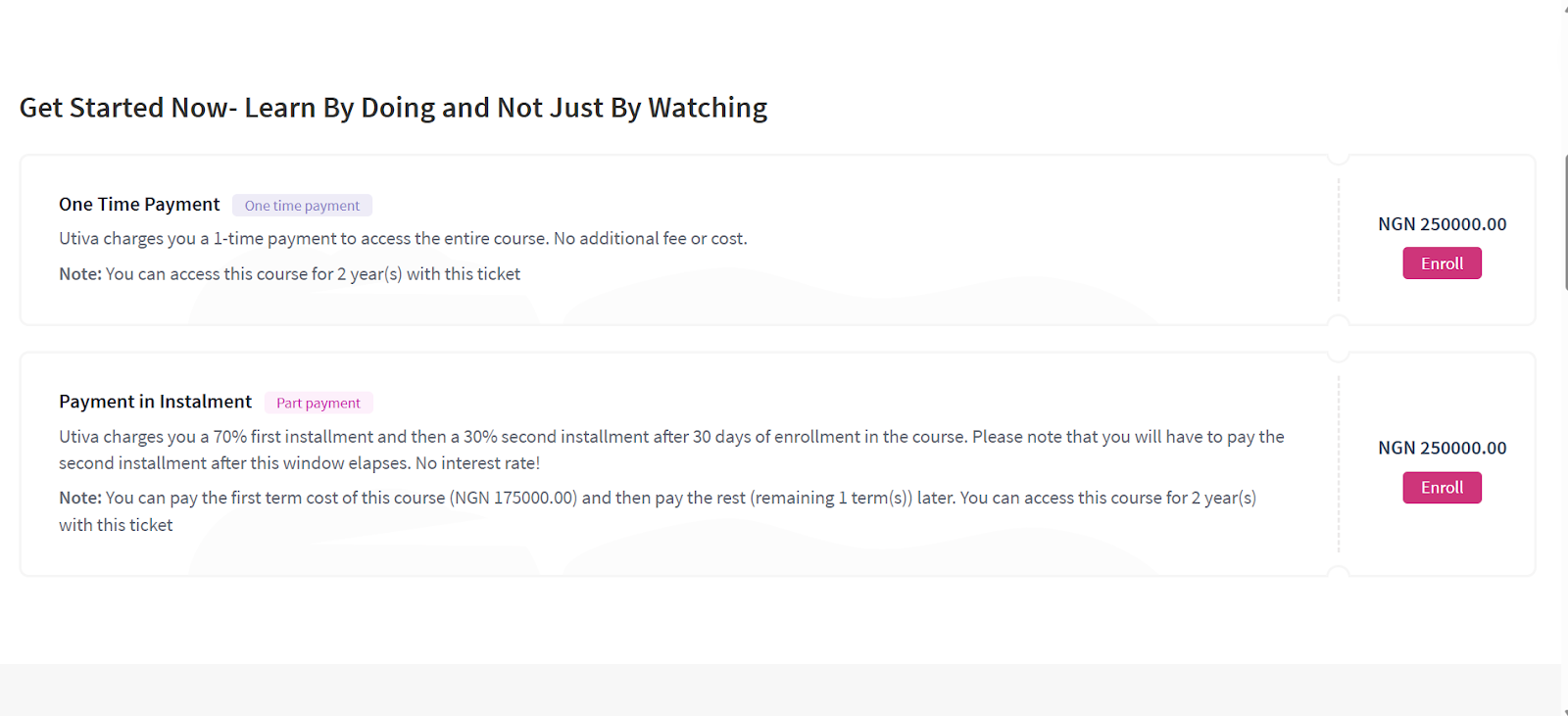
Online courses and tutorials are the best way to package your expertise and share knowledge through videos, slides, and resources. This is perfect for teaching skills like coding, design, or marketing.
To create an online course, choose a topic that is ever-green, in high-demand, and suits your expertise. As you work out the fine details of your course, create an outline, modules and a script.
Tools like Teachable help organize lessons and manage students, Loom simplifies video recording, and Canva makes creating slides and visuals easy.
Choosing the right platform to sell matters. For example, Udemy exposes courses to millions of learners but the competition is fierce. Meanwhile hosting your course on Coursera adds credibility through university partnerships but this comes with multiple restrictions.
With Mainstack, however, creators can host courses directly while maintaining full control over pricing, branding, and learner experience. Each option offers unique advantages, making online courses a flexible and appealing choice for creators.
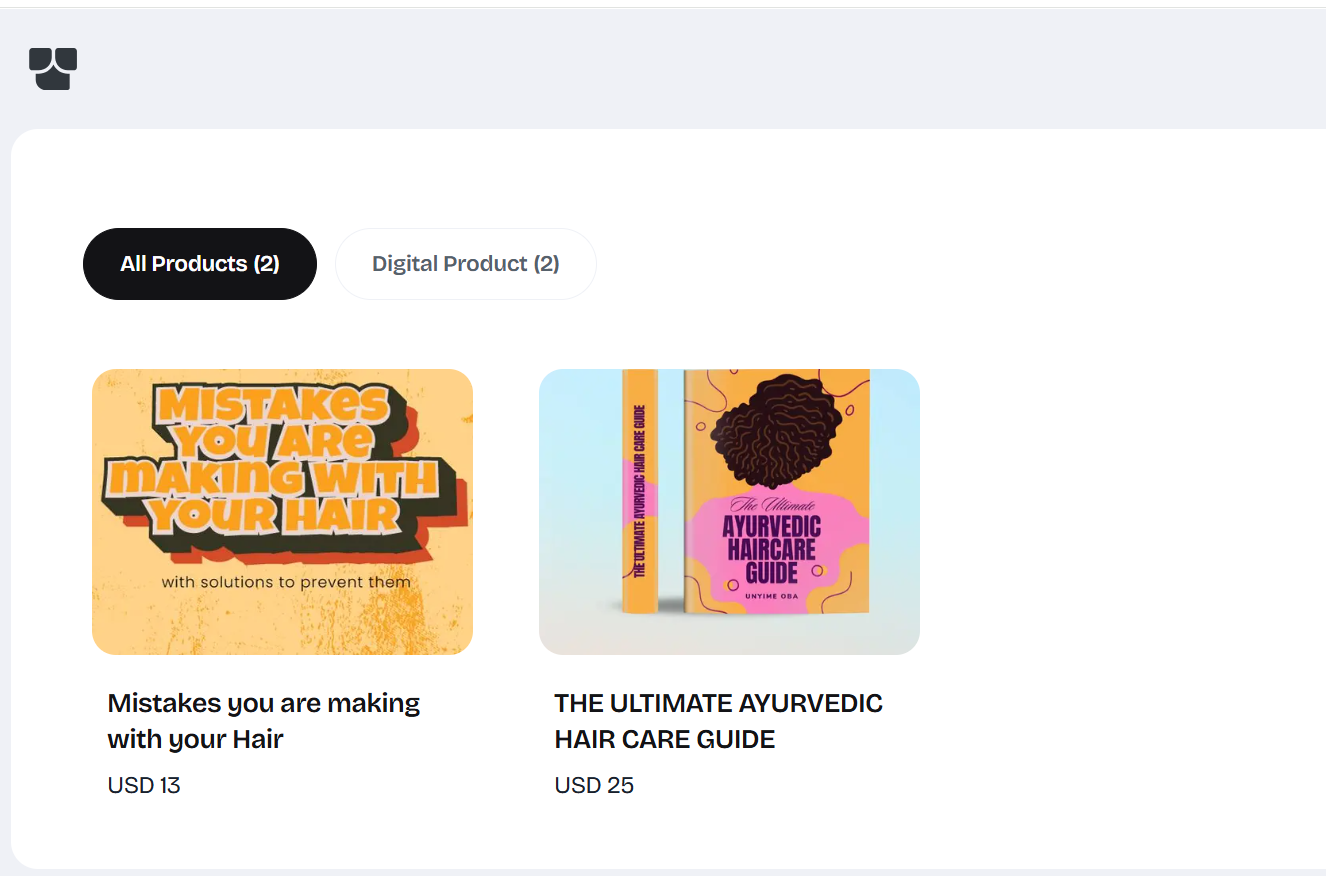
Ebooks are the easiest and most profitable digital products to sell. They suit almost any niche and can generate passive income for years. If you have useful knowledge or experience, you can turn it into a guide or playbook people will pay for.
With e-books, the biggest advantage is accessibility. Unlike online courses, they’re easy to create, design and package for sale.
You can create an ebook using tools like Google Docs or Canva, then sell it repeatedly without extra cost. Platforms like Amazon KDP and Gumroad give access to large audiences, while Mainstack lets you sell directly with full control over pricing, branding, and customer relationships. This flexibility makes it easy to reach readers and earn consistently.
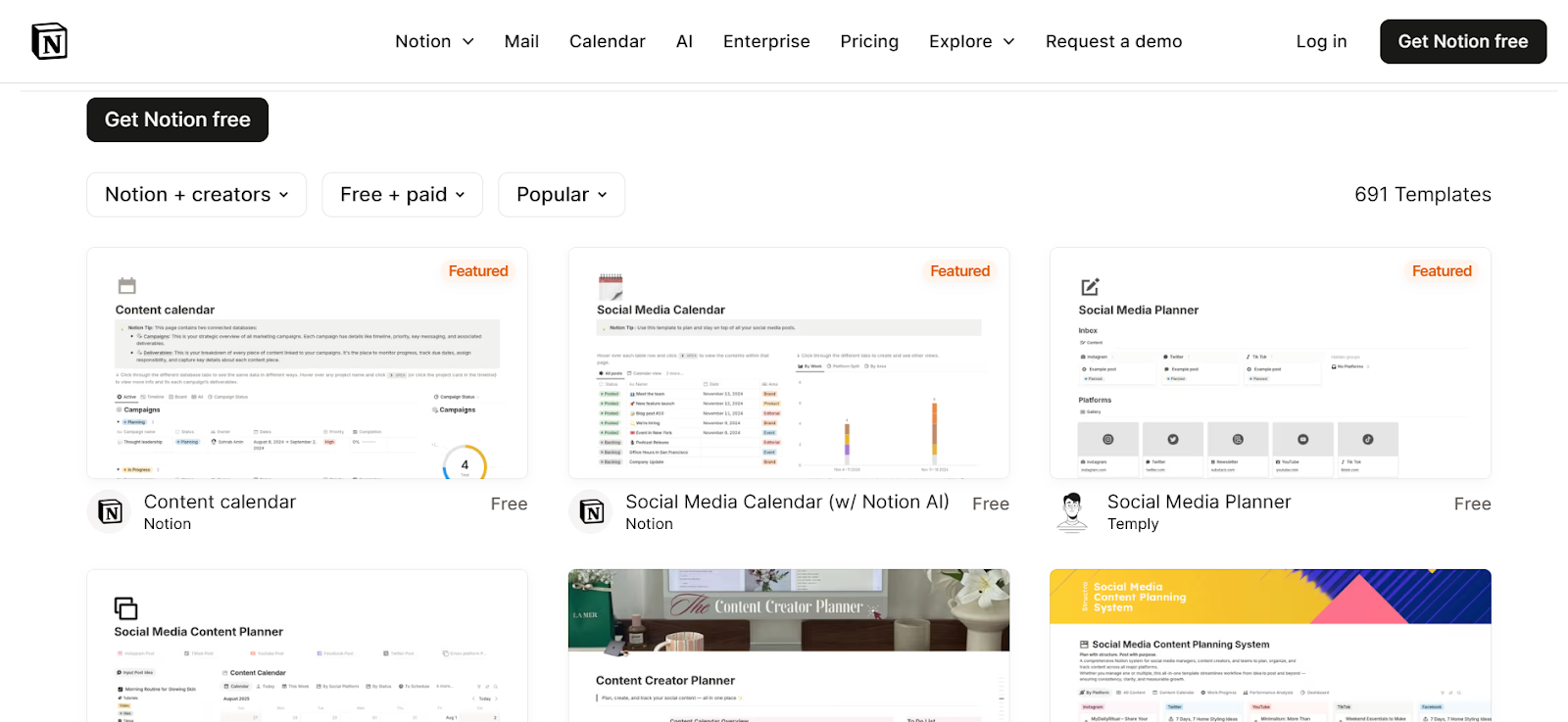
Templates and printables are pre-designed digital products that anyone can edit and customize to suit their branding or style—without starting from scratch. For example, it could be as simple as a Canva template for design or as complex as a website template for developers.
Templates and printables are easy to create yet highly valuable and in-demand. Start by looking for designs, systems, or workflows people already use and struggle to create from scratch. These gaps are great opportunities for templates.
Examples of templates in demand include:
Identify what your audience uses often, then create a plug-and-play version that saves them time.
Once you’ve picked a niche, tools like Canva, Figma, or Google Sheets make it easy to design and export editable templates. Platforms like Etsy, Gumroad, or Mainstack can help you sell directly to your audience and deliver files instantly.

Stock photos and videos are digital assets businesses and creators use for websites, social media, and marketing. This is a great way for photographers and videographers to monetize their skills.
Stock visuals are profitable because one file can be licensed and sold repeatedly, thereby creating steady income without the constant need to create new material.
Tools like Lightroom, Photoshop, and Canva make it easy to produce high-quality visuals, even for beginners. You can sell them on marketplaces like Shutterstock, Adobe Stock, or iStock, reaching a global audience of buyers.
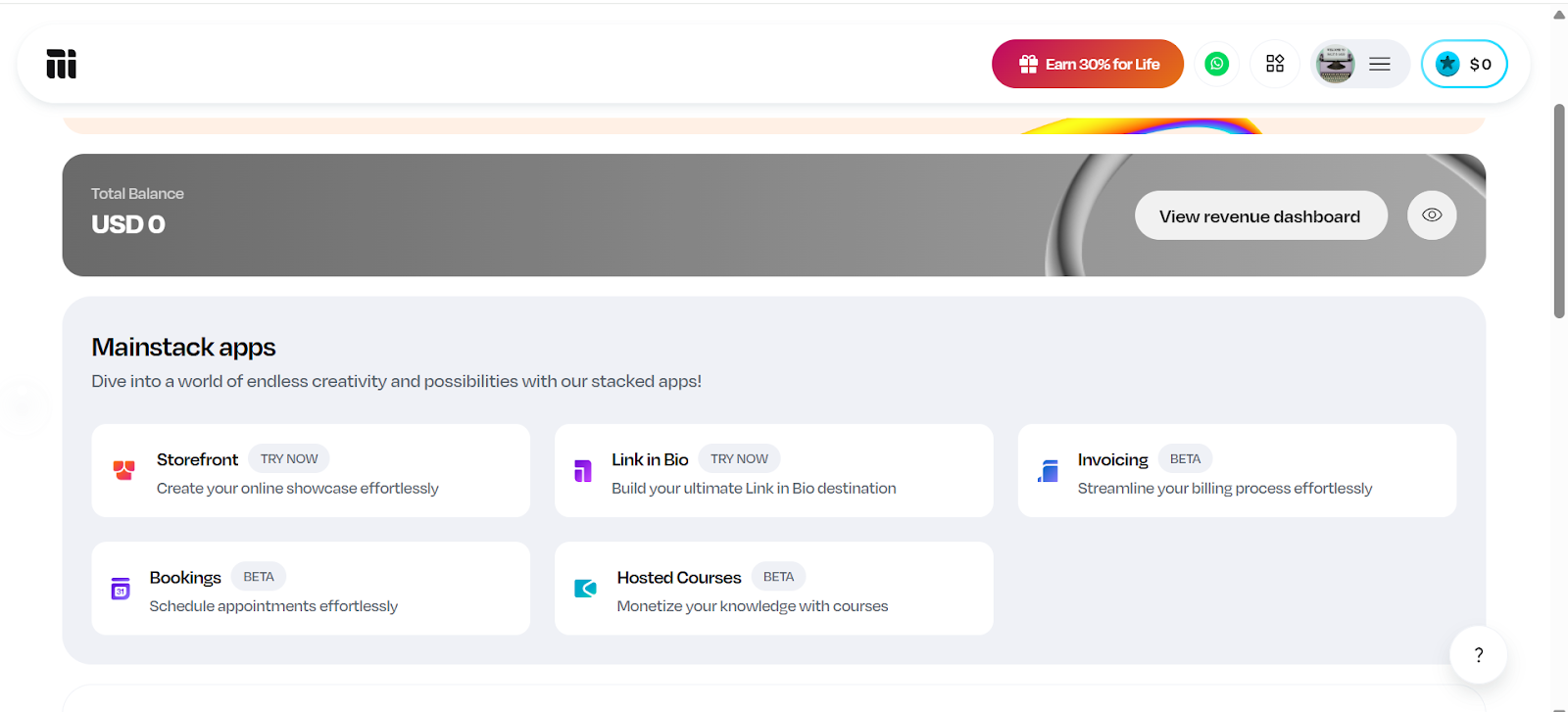
Software and apps are digital products that solve problems or provide useful features, from productivity tools to entertainment. They can generate strong income through one-time purchases or subscription models that offer recurring revenue.
One disadvantage of developing software or apps is the need for technical skills or a development team, but the potential returns can be substantial. You can distribute apps through the Apple App Store, Google Play Store, or other software marketplaces.
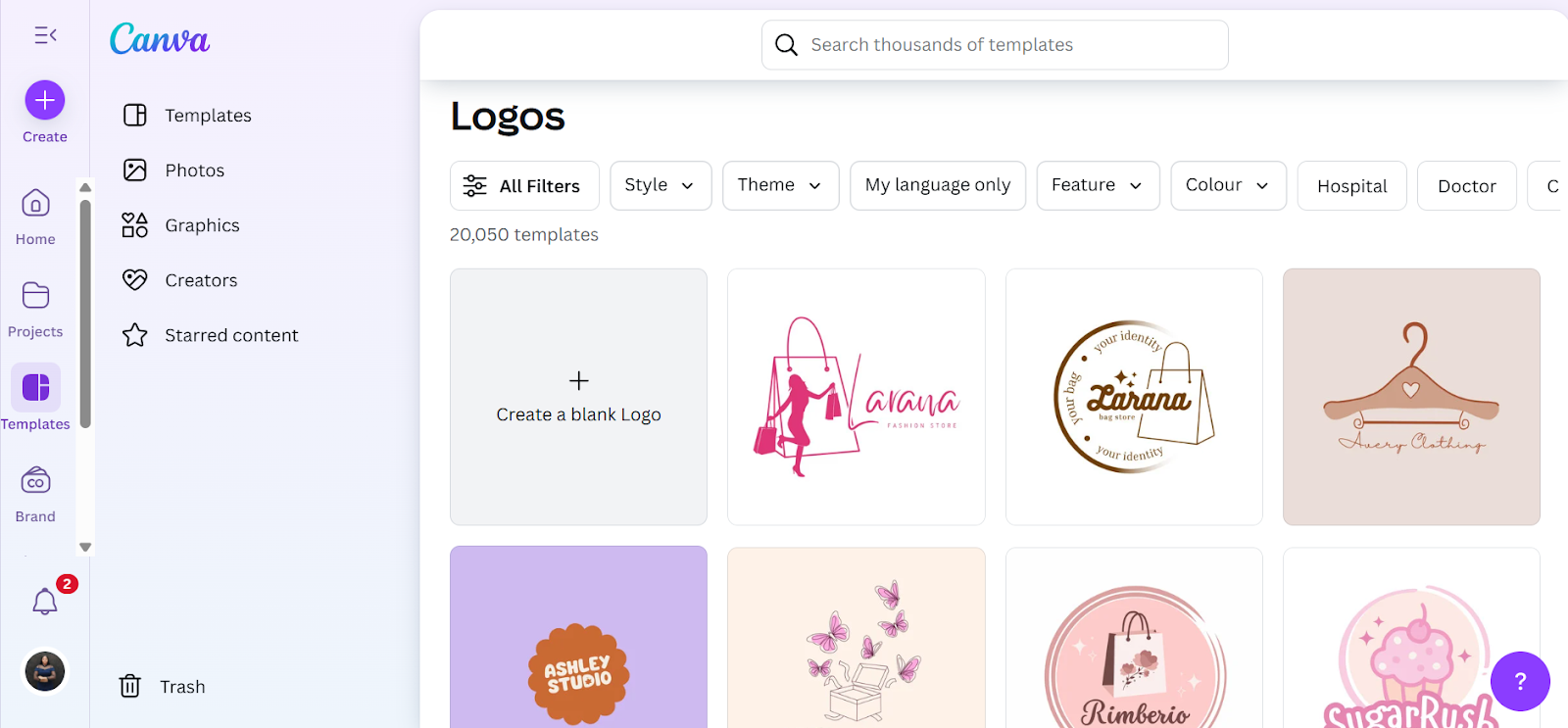
Graphic design assets are pre-made digital elements like icons, fonts, logos, and illustrations that other creators, businesses, or marketers can use in their projects.
These products are highly sought after because they save time and provide professional-quality design without the need for advanced skills.
Popular examples are custom icon packs for websites, unique font families, logo templates and social media graphic sets
Designers who create these assets can tap into a growing market of small businesses, content creators, and agencies looking for ready-to-use visuals.
Tools to create: Adobe Illustrator, Figma, Canva
Where to sell:
Digital music and sound effects are always in demand for videos, podcasts, and ads. For creators with music production skills, this makes audio assets one of the most rewarding digital products to sell.
Royalty-free packs are a popular option. Examples include ambient background loops, cinematic tracks, or short sound effects like clicks, swooshes, or notifications. Each audio track can be licensed repeatedly, with the potential to earn repeatedly without extra work.
Tools to create: Logic Pro, FL Studio, GarageBand, Ableton Live
Where to sell: AudioJungle, Pond5, BeatStars and Bandcamp.
Coaching and consultation turn expertise into income. Instead of creating a generalized product, these packages give buyers personalized guidance tailored to their specific goals. Whether it’s career coaching, business strategy, fitness, or even wellness, the appeal lies in access to real-time problem-solving and accountability from someone with proven experience.
What makes these packages especially profitable is how they can be expanded beyond one-on-one sessions. Some coaches record live consultations (with permission) and sell them as replays, or bundle sessions with toolkits and frameworks so clients walk away with practical resources they can keep using. For example, a brand consultant might include a framework for content planning, while a career coach could offer a job search toolkit alongside their sessions. These extras add lasting value and make the package more than just a one-time conversation.
Tools to create & manage:
Where to sell:
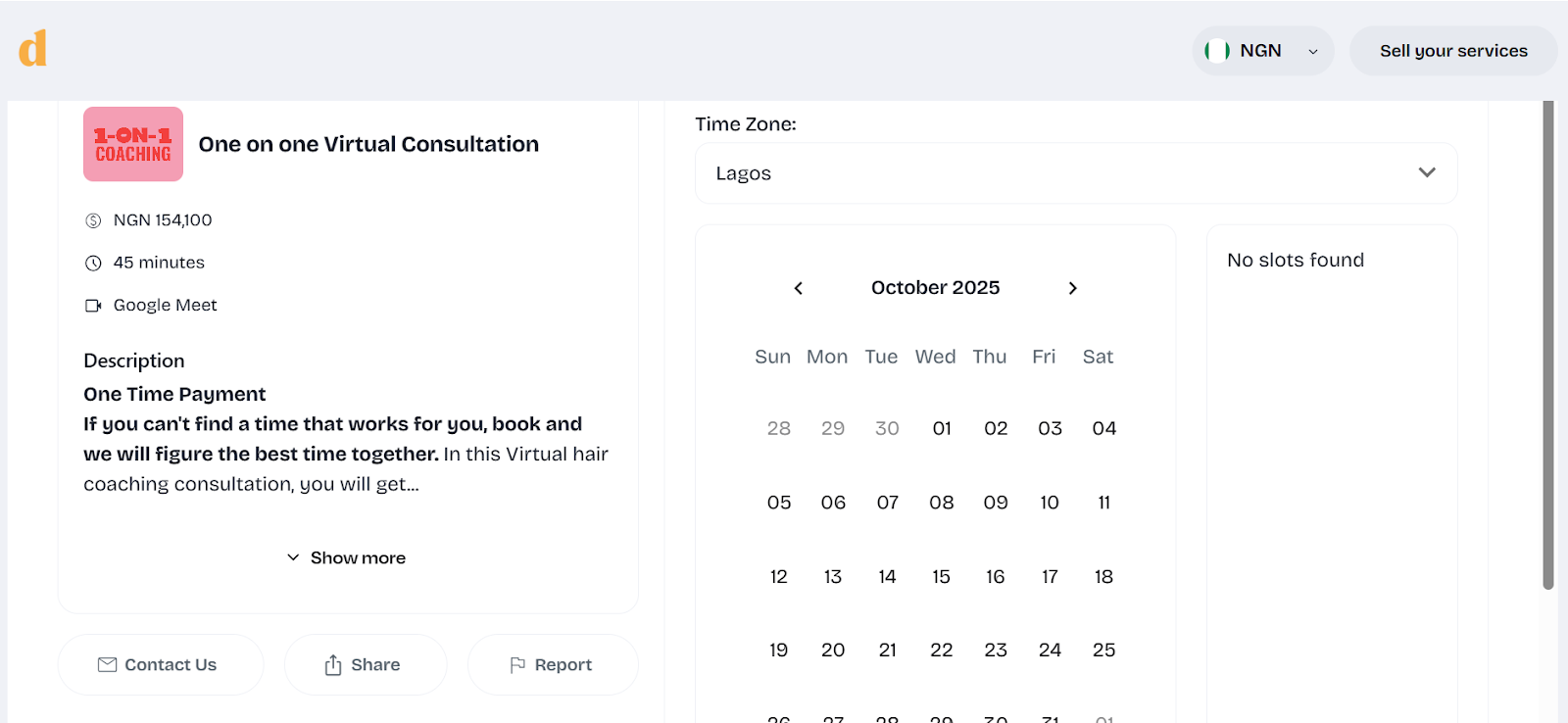
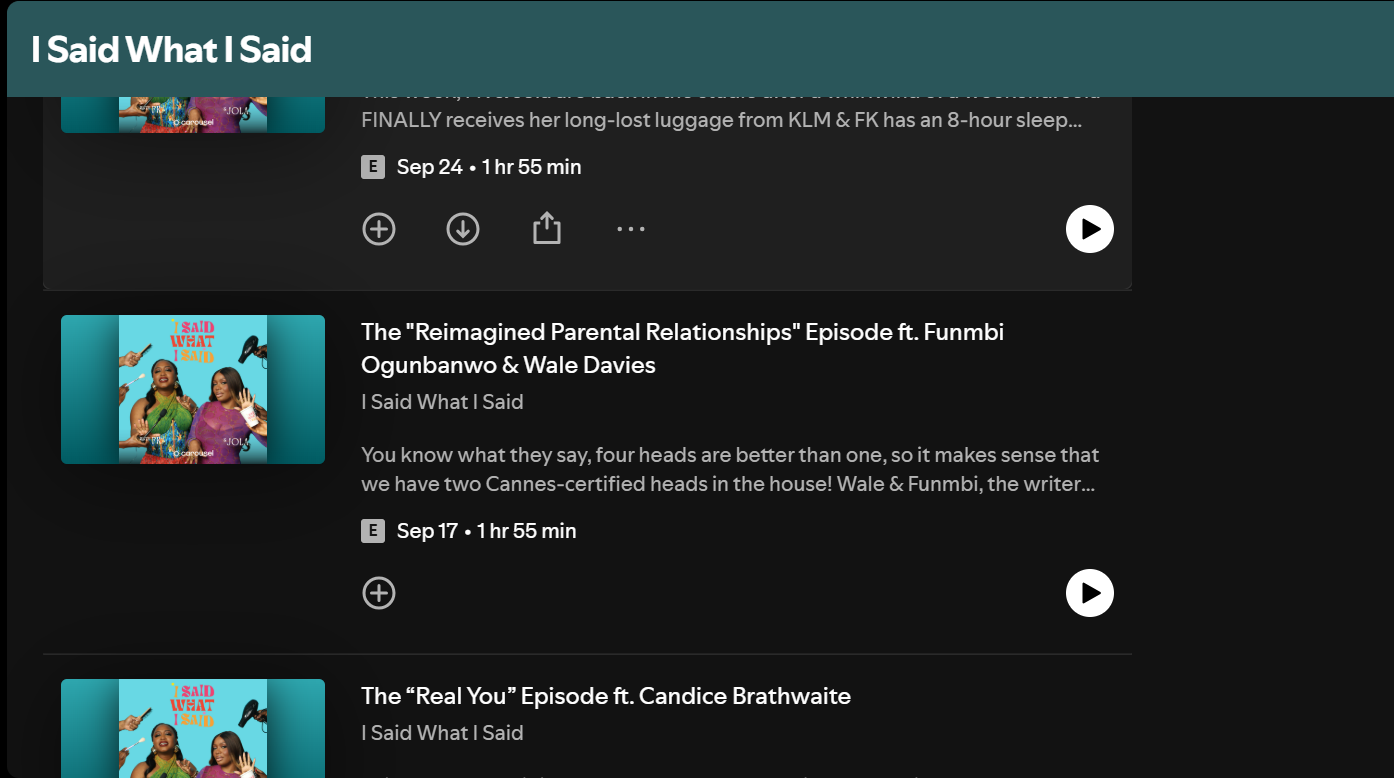
Podcasts are one of the most versatile digital products because they fit seamlessly into people’s daily routines without demanding screen time. What makes them profitable is the variety of ways they can be monetized: creators can put episodes behind a paywall, sell bundles of recorded sessions, or offer ad-free versions to premium subscribers.
For example, an entrepreneur might run a private podcast series where they break down business strategies step by step, while a wellness coach could turn guided meditations into a subscription-only audio library.
Even entertainment-driven creators, like those in the true-crime niche, often release bonus episodes or early access content for paying listeners.
Tools to Create
Where to Sell / Monetize
Virtual events and webinars are great digital products because they combine education, interaction, and exclusivity. Unlike pre-recorded courses or podcasts, they happen live, which gives attendees the chance to ask questions, engage with the host, and feel like part of a community. At the same time, replays of these sessions can be sold afterwards, which means one event can continue generating income long after it ends.
Creators across industries use this model in different ways. A business strategist might host a live masterclass on scaling startups, charging for access and later repackaging the recording as a paid replay. Even artists and designers have found success hosting virtual workshops, where people pay to learn techniques live and then buy access to the replay if they couldn’t attend.
Tools to Create
Where to Sell & Host

Themes and plugins are some of the most profitable digital products because they solve real problems for website owners. A theme controls how a site looks — its design, layout, and style — while plugins extend functionality, adding features like contact forms, SEO tools, or e-commerce capabilities. With millions of websites built on platforms like WordPress, Shopify, and Wix, the demand for well-designed themes and plugins is constant. Businesses, bloggers, and online stores are always looking for ways to improve their sites without hiring a full development team, making these products highly valuable.
To meet this need, a developer might create a WordPress theme designed specifically for food bloggers, or a Shopify plugin that helps e-commerce stores upsell related products at checkout. Because these tools are reusable and meet practical needs, one product can be sold repeatedly to different buyers, generating long-term income.
Tools to Create
Where to Sell
Digital art and NFTs are often mentioned together but serve different purposes. Both let creators monetize visual work, yet they use different tools, markets, and selling methods.
Digital art is any creative work made with digital tools like illustrations, paintings, wallpapers, or printables. It’s in high demand among small businesses and individuals looking for posters, social media graphics, or desktop wallpapers, making it one of the most versatile and profitable digital products.
NFTs (non-fungible tokens) are digital assets tied to blockchain technology, giving each file unique ownership. Unlike digital art that can be sold repeatedly, NFTs are usually one-of-a-kind or limited edition, which adds to their value. Beyond art sales, creators also use NFTs for exclusive content, access, and community rewards.

Tools to Create
Where to Sell
Memberships and subscriptions are reliable digital product models because they generate recurring revenue instead of one-time sales. They give subscribers access to exclusive content, resources, or communities and work well for creators who produce consistent value like tutorials, premium articles, private podcasts, or resource libraries..
Examples include private newsletters, exclusive online communities, and specialized resource hubs with templates, videos, or coaching sessions. Since members pay for ongoing access, this model also builds stronger audience relationships.
Tools to create membership communities: Patreon, Substack, Memberstack, Ghost
Where to sell membership communities: Patreon, Substack, Mainstack
Digital magazines and newsletters are one of the most accessible ways to package and sell knowledge. Unlike blogs or free email, they focus on curated, high-value content that people are willing to pay for. This could be industry insights, lifestyle tips, or niche commentary.
A digital magazine can look like a monthly publication with in-depth features, interviews, and visuals, for a specific audience.
Newsletters, on the other hand, are email-based publications that can range from personal commentary to curated links, updates, or insights. They’re typically shorter, more conversational, and thrive on consistency, often arriving weekly or bi-weekly. Unlike digital magazines, they don’t have to be long-form or heavily designed.

Both formats work because they give readers something structured, reliable, and more focused than what they’d find by casually scrolling online.
Spreadsheets and calculators might not sound flashy, but they’re some of the most practical and profitable digital products out there. People are constantly on the lookout for ready-made tools like budget planners, content calendars, or ROI calculators that save time and effort.
Before you create a spreadsheet, identify a market that needs a spreadsheet. Are they finance enthusiasts? Small business owners who want to analyze cost? Define that.
Next is to design the copy, spreadsheet and tutorial to match the audience’s taste. Remember, the appeal lies in how easily these tools can be customized by the buyer.
Tools to Create Spreadsheets & Calulators
Creating digital products is half the work. The real challenge is reaching the right people and providing a smooth experience. A few core practices can make all the difference:
Digital products remove the limits of physical ones. Because it’s not limited by borders, you can sell globally. For creators, this means more freedom and greater control over how their value is shared.
And if you’re looking for a way to start selling, platforms like Mainstack do the heavy lifting. Mainstack helps you package, present, and sell your products without worrying about tech setup.
If you’ve been thinking about starting, now’s the time. Set up your Mainstack storefront; it takes just five minutes.



Knowledge is more valuable than ever in this digital age, and this is evident when you consider the skills that once sat quietly on résumés now becoming digital products that generate real income. Whether you’re a designer, marketer, lawyer, or hobbyist with niche knowledge, you can mold what you know into a digital product that creates value for others and generates income for you.
Digital products are items you create and share online that don’t exist in a physical form. Instead of shipping a book or mailing a CD, you deliver your knowledge, skills, or creativity as a file or online resource that people can download or access instantly.
Digital products come in many forms, e.g., e-books, guides, video lessons, templates, or even photography presets. Because they live online, you don’t have to worry about printing, packaging, or delivery. Once the product is ready, you can sell it to as many people as want it without having to reproduce products after each sale.
The beauty of digital products is that they scale. Unlike one-on-one services where your earning potential is tied to hours worked or production capabilities, a digital product lets you share your expertise repeatedly without starting from scratch each time.
Digital products are one of the easiest ways to step into entrepreneurship, and that’s because they don’t require much start-up capital, they can reach people anywhere in the world, and once created, they serve as a recurring stream of income without extra effort.
More importantly, they create impact by helping people. When you share your knowledge as a digital product, you pass on tools that help others solve problems, save time, or learn valuable skills that make a real difference in their personal or professional lives.
Recognizing the value of digital products is only the first step. The real work lies in turning your expertise into something tangible and useful for others. This doesn’t mean reinventing yourself or mastering complicated tech tools; it simply means breaking down pre-acquired knowledge into a form people can access, learn from, and apply. The process is straightforward once you understand the steps, and it allows you to move from having a skill to owning a product that works for you even when you’re not actively working.
Step 1: Identify the Skill to Monetize
The first step is identifying what skill you can turn into a product. The skill in question doesn’t necessarily have to be the most advanced thing you know; in fact, the skills that feel like second nature to you are often a source of struggle for others.
Think about the questions people regularly come to you with, the problems you can solve quickly that others find time-consuming, or the results you’ve already helped friends, colleagues, or clients achieve.
To make sure there’s genuine demand, take time to validate your idea by observing online communities like Reddit, Quora, or Facebook groups. If you notice the same pain points coming up repeatedly in your area of expertise, that’s a strong sign you’re onto something worth developing into a digital product.
Step 2: Choose the Right Format for Your Digital Product
Once you’ve identified the skill you want to build on, the next step is deciding the format your digital product should take. This choice depends on two things:
For example, if your skill requires clear, step-by-step explanations, an e-book or guide might be the best fit. If it involves processes people need to repeat, such as drafting contracts, designing, or analyzing data, then templates and toolkits will deliver more value. On the other hand, if your expertise requires more in-depth teaching or demonstration, an online course or workshop allows you to walk people through concepts with clarity.
Step 3: Create Value with Your Content
At the heart of every successful digital product is its ability to solve a problem. This is because people aren’t simply buying information; they’re paying for clarity, direction, and results. Simply put, your content should be designed to guide your audience from where they are now to where they want to be.
Instead of overwhelming them with everything you know, focus on breaking your knowledge into clear, actionable, easy-to-follow steps, and use real-life examples or case studies to make your lessons feel practical and relatable. By keeping the focus on outcomes, you not only provide value but also create a product that feels worth investing in.
Step 4: Set Up Your Sales System
Creating your digital product is only half the work; the next step is making sure people can actually buy and access it. A good sales system should let you upload your product, handle payments securely, and deliver the content instantly once someone makes a purchase. It should also give you insights into how your product is performing, so you can adjust and improve over time.
Platforms like Mainstack make this process much simpler by bringing everything into one place: you can upload your e-book, course, or template, accept payments from anywhere in the world, and keep track of your sales and analytics without jumping between multiple apps. Having a streamlined setup is extremely important because it saves you time and creates a smoother experience for your buyers.
Step 5: Price Your Digital Product

Deciding how much to charge for your digital product can feel like a challenge, but the key is to strike a balance between fairness, value, and market expectations.
Start by considering the time, effort, and resources you invested in creating it, this gives you a baseline. From there, think about the value your product delivers. If your e-book helps freelancers save hours of trial and error, or your templates simplify a process that usually takes days, that outcome should reflect in your price.
It’s also worth researching what others in your niche are charging so you can position yourself competitively without undervaluing your work.
Alternatively, you can experiment with tiered pricing, offering a standard product at an accessible price point and a premium bundle with extras like templates, bonus videos, or private Q&A sessions at a higher rate. This way, you make your product accessible to a wider audience while also giving those who want more depth or tools the option to invest further.
Step 6: Market and Launch Your Product
After creating a digital product, it is important to ensure people know of its existence; this is why launch plans are essential to the success of your digital product.
Content marketing is one of the most effective ways to draw people in, and this can be achieved by sharing blog posts, LinkedIn articles, or even short-form threads that speak directly to your niche. Establishing yourself as a helpful resource naturally guides readers toward your product.
Collecting emails early to nurture potential buyers directly by rewarding them with early-bird discounts or exclusive bonuses is another great place to start.
Additionally, collaborating with fellow creators is also a good way to expose your product to new audiences who already trust the person recommending you.
Step 7: Refine, Improve, and Scale
Your first digital product doesn’t need to be flawless; what matters most is getting it into the hands of real people. Once you launch, pay close attention to the feedback you receive. This will highlight what’s working, what needs refining, and where new opportunities might lie.
Over time, you can build on your initial success by introducing additional products that address related needs, or by bundling existing ones into higher-value offers. The aim is to create an ecosystem around your skill, one where your products complement each other and your audience has multiple entry points to learn from you.
At its core, creating a digital product is about taking what you know and molding it into something that genuinely helps others. It doesn’t have to be complicated or perfect from the start; what matters most is putting your work out there, learning from the response, and building on it. Each attempt gives you clarity and the chance to create something that grows in both value and impact over time.
.jpg)


Taking notes has always been part of learning, planning, and staying organized. Traditionally, people carried notebooks and sticky notes everywhere, but times have changed. Today, digital note-taking apps make it easier to capture, store, and organize information on your phone, tablet, or computer. These apps are not just about typing words. They allow you to add images, voice recordings, checklists, and even collaborate with others in real time.
The ability to organize content ideas, track meetings, or simply remember daily tasks, is where note-taking apps can significantly help your work. The best part is that they sync across devices, so your notes follow you wherever you go. In this guide, we will explain what digital note-taking apps are, what they are used for, the best ones to try, and how to use them effectively for maximum productivity in content creation.
Digital note-taking apps are software tools that allow you to create and store notes electronically instead of on paper. They work on smartphones, tablets, and computers, making it easy to capture information anywhere. Unlike physical notebooks, these apps provide features such as:
These apps can store plain text, images, voice notes, checklists, and even documents. For many, they replace paper notebooks while offering extra features like sharing and collaboration.
Note-taking apps have grown popular because they fit the needs of many different users. Students rely on them to keep class notes organized, highlight important points, and manage assignments in one central place. Professionals often use them during meetings to capture action points, track tasks, and collaborate with colleagues. For writers and creators, these apps are perfect for brainstorming, drafting outlines, and storing references. Even everyday users benefit, whether it’s for grocery lists, reminders, or keeping a personal journal.
People use note-taking apps for several key reasons:
Unlike scattered sticky notes or messy paper notebooks, digital apps give everything structure. You can search notes instantly, group them by topic, and never worry about losing important information.
Note-taking apps can feel overwhelming at first. With so many features like folders, tags, voice notes, and cloud syncing, it’s easy to just dump information and never look at it again. But when used well, these apps become more than just digital notebooks, they turn into powerful tools that boost productivity, reduce stress, and keep your thoughts organized across all your devices.

The secret to maximizing note-taking apps is having a simple and consistent system. By learning how to capture ideas quickly, organize them logically, and review them regularly, you can make your note-taking app work for you instead of against you. The goal isn’t to add complexity to your content creation but to make storing, finding, and using information effortless.
Enable cloud sync so your notes are always backed up. Apps like Google Keep and Evernote automatically save to the cloud, while Notion and OneNote give you seamless cross-device syncing. This ensures you never lose notes even if you switch devices.
Digital note-taking is not limited to text. You can:
This makes your notes richer and more practical than traditional notebooks.
The hardest part of digital note-taking is consistency. To build a routine:
Many apps double as task managers. For instance, Notion allows you to add checklists and deadlines, while Evernote integrates with calendars. This makes your note app not just a memory bank, but also a productivity tool.
Digital note-taking apps are more than just electronic notebooks; they are powerful tools for staying organized, productive, and creative.
The key to success lies in building a consistent habit. Start small with one use case, learn the app’s features, and gradually expand your system. Use folders, tags, templates, and cloud storage to keep your notes organized and safe. Explore multimedia options like images and voice memos to make your notes richer and more engaging.
With apps like Evernote, Notion, Google Keep, OneNote, and Apple Notes, there is a solution for everyone. Find the one that fits your lifestyle, stick with it, and watch how your productivity and organization improve.
.jpg)


When it comes to course creation, one of the most pivotal decisions you'll make as a digital creator or entrepreneur is selecting the right topic. The intersection of passion and knowledge not only fuels your motivation but also ensures that your enthusiasm shines through, making your course both engaging and valuable to learners.
Here's an extensive guide on how to pinpoint that perfect topic that aligns with your interests and expertise:
Expertise ensures credibility:
Your passion needs an audience:

Passion translates into engagement:
Narrow down to what's uniquely you:
Choosing a course topic is more than just picking something you know; it's about selecting something you love, something you can teach with fervor, and something that meets a market need. For digital creators and entrepreneurs, this alignment not only makes the course creation process enjoyable but also positions you as an authentic and passionate educator. Remember, your enthusiasm is infectious; let it guide you to a topic that not only fulfills you but also inspires your learners to explore, learn, and grow.



Building a personal brand is no longer optional; it is the foundation upon which creators, entrepreneurs, and professionals are perceived and remembered. A strong brand sets one person apart, making it easier for audiences to connect, trust, and invest in what is being offered. The encouraging part is that building a brand does not require a large budget.
Social media has leveled the playing field, giving anyone the chance to gain visibility and establish authority. Often, the only cost is a data plan, yet the returns can be transformational.
Research shows that professionals with active personal brands are 3.5 times more likely to attract new clients, and 60% of consumers have purchased from a brand because of its reputation. With clarity, consistency, and resourcefulness, anyone can build authority, grow visibility, and position themselves for lasting opportunities, all without breaking the bank.
There are countless reasons to build a personal brand, but if the goal is to earn and thrive in the digital space, these are some of the most impactful:
Clearly defining what makes you unique allows you to rise above competitors offering similar products or services. Without a distinct personal brand, even the most talented individuals risk fading into the background.

An authentic and consistent personal brand builds credibility. Audiences are far more likely to trust and engage when you appear knowledgeable, reliable, and aligned with your values.
Strong branding helps position you as a go-to expert in your niche. For example, executives with stronger personal brands receive up to five times more engagement on LinkedIn compared to peers.
A recognizable personal brand enhances visibility, making you more likely to attract partnerships, sponsorships, collaborations, or even speaking engagements.
A strong personal brand increases your perceived value. Creators and professionals with well-defined brands can charge higher rates because clients are willing to pay more for expertise, credibility, and authenticity.
A personal brand isn’t tied to just one platform or moment. It’s a versatile asset that grows over time, spans multiple channels, and becomes a foundation for long-term stability and recognition.

Positioning is the foundation of every personal brand. Without clarity, even the best content will blend into the noise. To strengthen positioning:
A simple positioning statement can be:
“Helping [specific audience] achieve [specific result] through [unique method or expertise].”
Facts inform, but stories connect. People are drawn to real experiences that feel relatable. Share the challenges, the turning points, and the reasons behind the work being done. A fitness coach, for example, might share the struggle of being overwhelmed in the gym and how that led to creating simple, beginner-friendly workouts. These stories make a brand feel human and memorable.
Social media is the most accessible way to build a brand, but trying to show up everywhere at once often weakens your impact.. The key is to choose where the target audience spends time:
Action steps:
Every strong brand needs a central hub, a single place where people can learn more about you, see your work, and take action. This doesn’t have to be an expensive website. Tools like Mainstack’s link-in-bio feature allows you create a professional hub that showcases your offers, content, and social links in one clean, customizable page. It’s affordable, easy to set up, and built with creators in mind, so you can focus on growing your brand instead of worrying about tech or design.
A scattered brand is easily forgotten. Instead of offering too many things, lead with a single clear offer. Examples include:
This creates a strong first impression and builds trust. Additional offers can be added as credibility grows.
A strong visual identity does not require expensive designers. Free tools can keep branding consistent:
Consistency in visuals reinforces recognition across platforms.
Content can be stretched into multiple formats to save time and increase visibility. For example:
Repurposing ensures that one idea is leveraged across multiple platforms, increasing reach without incurring additional costs.
Consistency is the secret ingredient behind every recognizable brand. It is not about posting endlessly; it is about showing up regularly that your audience knows they can rely on you. Over time, this builds trust, familiarity, and authority.
Here’s how to stay consistent without burning out:
Audiences are drawn to brands that show up steadily. Consistency does more than grow visibility; it turns attention into loyalty, and loyalty into real opportunities.

Networking accelerates growth and does not require money, only intention and effort. Building the right relationships can create opportunities that no paid campaign could match.
Practical ways to get started:
When relationships are built on authenticity and trust, they often lead to unexpected opportunities, from referrals to collaborations that multiply reach and influence.
A personal brand is not static, it grows and evolves along with the creator. Regular check-ins ensure that the brand remains aligned with new goals, skills, and audience expectations.
Practical steps to refine your brand include:
Professionals with strong and consistently refined personal brands experience higher employability, greater career satisfaction, and more long-term opportunities.
Building a personal brand does not require a massive budget. What truly matters is clarity, consistency, and connection. Every story shared, every piece of content posted, and every interaction adds a brick to the foundation of a brand that stands out. The most successful creators focus on showing up consistently, telling authentic stories, and offering value to a specific audience. Over time, these efforts attract visibility, trust, and opportunities that translate into income.



Your digital storefront is more than just a webpage, it's your gateway to turning skills, knowledge, and services into sustainable income streams. Whether you're selling digital products, offering coaching services, or monetizing your expertise, creating a high-converting product page is essential for maximizing your online earning potential.
In today's competitive digital landscape, creators and entrepreneurs need every advantage to stand out and convert visitors into paying customers. Your product or service page serves as your 24/7 salesperson, working to showcase your offerings and persuade potential customers to take action, even while you sleep.
Your product page is essentially your digital storefront, the place where potential customers decide whether to invest in what you're offering. According to recent research by Baymard Institute, the average website conversion rate across industries is just 2.17%, meaning there's significant room for improvement for most businesses.
The key to building a high-converting page lies in understanding that visitors arrive with specific problems they need solved. Your job is to clearly demonstrate how your product or service provides that solution while removing any barriers to purchase.
Instead of simply listing what your product includes, focus on the transformation it provides. If you're selling an online course, don't just mention "10 video lessons and downloadable templates." Instead, highlight outcomes like "Master the skills to earn $5,000+ monthly from freelancing in 90 days."
This approach aligns with how successful creators think about monetization—focusing on the value delivered rather than just the deliverables. Use customer success stories and specific results to make your benefits tangible and credible.
Your webpage design should reflect professionalism while remaining approachable. Use high-quality images, clean layouts, and consistent branding throughout. Video content is particularly powerful; HubSpot reports that including video on landing pages can increase conversion rates by up to 80%.

Consider showcasing your product in action, featuring customer testimonials on video, or providing a behind-the-scenes look at your process. This visual storytelling helps build the trust necessary for online transactions.
Your CTAs should be impossible to miss and irresistible to click. Use action-oriented language that creates urgency while addressing common objections. Instead of generic "Buy Now" buttons, try specific phrases like:
Position your primary CTA above the fold and repeat it strategically throughout the page. Research by WordStream shows that pages with a single, focused CTA can increase conversions by up to 371%.
Anticipate and address the concerns that might prevent someone from purchasing. Common objections include:
Use testimonials, guarantees, FAQ sections, and detailed product descriptions to overcome these barriers. Social proof is particularly powerful, display customer count, testimonials, and success stories prominently.
Modern customers expect pricing flexibility. Consider offering:
Research by ProfitWell indicates that offering multiple pricing options can increase conversion rates by up to 20% by accommodating different customer preferences and budgets.
If you're selling globally, consider currency localization and cultural preferences. Displaying prices in local currencies can significantly impact conversion rates, studies show that 92% of online shoppers prefer to see prices in their local currency.
Additionally, ensure your page loads quickly across different regions and devices. Google reports that 53% of mobile users abandon sites that take longer than 3 seconds to load.
Implement analytics to track key metrics like:
Use A/B testing to experiment with different headlines, images, pricing displays, and CTA placements. Even small improvements can compound into significant revenue increases over time.
With mobile commerce accounting for over 50% of online sales, your product page must provide an excellent mobile experience. Ensure:
Genuine scarcity and urgency can significantly boost conversions when used ethically. Consider:
Avoid fake countdown timers or manufactured scarcity, as these tactics can damage trust and brand reputation.
Remove friction from your checkout process by:
Research by Baymard Institute shows that 70% of online shopping carts are abandoned, often due to complicated checkout processes or unexpected costs.
Creating a high-converting product or service webpage is both an art and a science. It requires understanding your audience, clearly communicating value, and continuously optimizing based on real performance data.
The most successful online entrepreneurs understand that their webpage is never "finished", it's a living asset that evolves with their business and customer feedback. By implementing these strategies and maintaining a focus on customer value, you can create a digital storefront that not only showcases your offerings but consistently converts visitors into satisfied customers.
Remember, every element of your page should serve the goal of helping potential customers understand how your product or service will improve their lives or solve their problems. When you focus on delivering genuine value and removing barriers to purchase, conversions naturally follow.
Build your high-converting storefront today. Whether you're selling digital products, offering services, or monetizing your expertise, the right tools and strategies can help you turn your knowledge into sustainable income streams. Start building your professional webpage today and join thousands of creators who are successfully monetizing their skills online.